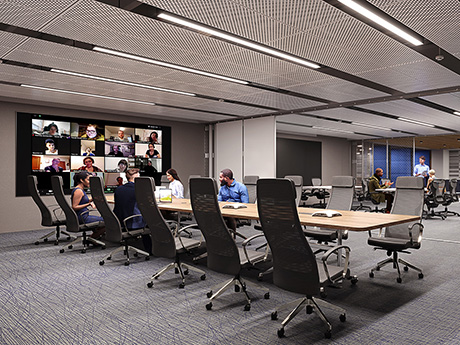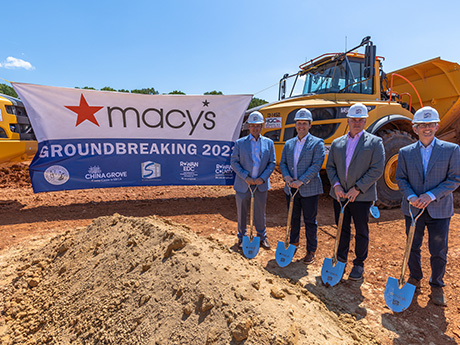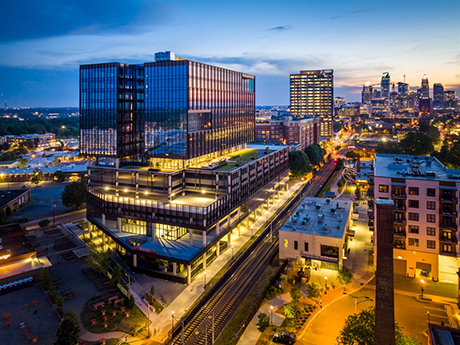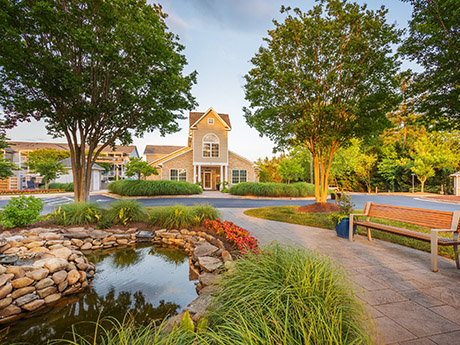The Raleigh-Durham office market is poised for future growth as it exits the pandemic, however the question for us all is when. Re-occupancy of buildings by office users has been stubborn in the current post-pandemic environment. Despite the sluggish activity since the beginning of the year, there have been bright spots with companies becoming more strategic about their office space decisions as they return, especially in newer projects that offer best-in-class experiences. Moving forward, there will be economic and geopolitical headwinds that may interfere with the pace of recovery. However, investors and developers continue to the see the value in the market due to our highly educated workforce, favorable business climate and one of the fastest growing population centers in the country. The return of the workplace is the main driving factor for the activity in the office leasing market. As companies execute their re-occupancy plans, they are reevaluating their existing buildings, footprints and workspaces in a way that we have never seen before. Forward thinking organizations are making decisions to create unique spaces where their employees want to come to work, rather than a space where they have to come to work. We have quickly seen that one size …
Market Reports
Charlotte’s Underlying Fundamentals Support Strong Industrial Development, Forward Sales
by John Nelson
In a constantly evolving and unprecedented era, Charlotte is an extremely well-positioned industrial market experiencing significant rent growth, an influx of new capital and development in new frontiers. As of first-quarter 2022, Charlotte was nearing an all-time low vacancy rate and rental rate growth reached more than 12 percent year-over-year. Needless to say, Charlotte has become a prime target for industrial investors, developers and tenants. Staggeringly low vacancy, strong tenant demand and rapid rent growth are trends the industrial real estate sector is experiencing around the county. While these trends are not necessarily unique to Charlotte, they are having a particularly large impact on how Charlotte is growing. These strong underlying leasing fundamentals accompanied by land scarcity left Charlotte under-supplied with developers on the hunt for land. A recent announcement by the Silverman Group is a great example. After closing on a 200-acre site just 30 minutes northeast of Charlotte in Rowan County, the Silverman Group announced a speculative industrial development capable of up to 1.9 million square feet and quickly signed a lease with Macy’s for an e-commerce distribution center spanning 1.4 million square feet. On the west side of Charlotte in Gaston County, NorthPoint Development has seen similar …
As Charlotte continues to expand its economy and population, its multifamily market is reporting unprecedented levels of activity. The market has experienced a tremendous rebound from the artificial pandemic performance in terms of investor demand, in-migration and rent growth. The market recorded double-digit rent growth in 2021, extremely tight vacancies across submarkets, record lease-up velocity and a modest supply of new deliveries. All these signs clearly point to a landlord’s market, and investors have taken notice. This year looks to be another solid one for Charlotte’s multifamily investment market, coming off a record-setting 2021 with nearly $6.4 billion in transactions (compared to $3.5 billion in 2020 and $3.7 billion in 2019). So far in 2022, pricing remains strong and sales are ahead of the pace set at the start of last year ($1 billion in first-quarter 2022 vs. $566 million in first-quarter 2021). Companies and residents are flocking to Charlotte, which is increasingly recognized as a high-growth market. It is business-friendly, offers a great lifestyle and is a talent magnet. Lowes, USAA and Centene are examples of companies expanding their footprints and hiring thousands of employees, all who need a place to live. Moreover, these are high-paying jobs ($100,000-plus), targeting …
By Chase Monroe, Carolinas Market Director and Charlotte Brokerage Lead, and Chris Schaaf, Executive Managing Director of Tenant Representation, JLL Nearly two years after the onset of the pandemic, Charlotte’s office market is showing strong signs of recovery as economic momentum builds. Last year, the Queen City set the stage for growth with 4.9 million square feet of office space delivered from pre-pandemic projects, boasting over 1 million square feet more than any other metro for deliveries that occurred in 2021. Market-wide preleasing also exceeded 60 percent and nearly 2.1 million square feet of office space was under construction. Entering 2022, the market continued to forge ahead as large occupiers started their return to the office, and leasing activity began to surge throughout the region. And long-anticipated projects, such as Legacy Union, 110 East and The Station broke ground. According to Urban Land Institute’s 2021 annual report, Charlotte ranked No. 6 among the hottest real estate markets in the United States, with developers and investors betting big on Sun Belt cities. Deemed an 18-hour magnet city by the Emerging Trends in Real Estate survey, people and businesses alike are flocking to Charlotte, the so-called “migration destination.” Thanks to strong economic …
Raleigh-Durham is increasingly popping up at the top of shopping lists for multifamily investors, and buyer demand — coupled with strong rent growth — is resulting in record sale prices. As of this writing, 2021 is on pace to be one of the best years ever in terms of total transaction volume. As capital continues to flow into the market across the spectrum of investor groups from institutions to high net worth individuals, cap rates also have dropped into record territory. Just about every sale in the market is trading at a cap rate in the 3s, and even sub-3 percent in some cases. For example, Northmarq recently brokered the sale of the 489-unit Indigo Apartments in Morrisville on behalf of Blue Heron Asset Management. The asset sold for $121.9 million. The deal was one of the largest single-property multifamily sales in North Carolina in 2021, and the largest in Raleigh-Durham’s history upon closing. The property received multiple qualified offers before selling to Toronto-based Starlight Investments for $249,000 per unit, surpassing initial pricing guidance by nearly 20 percent. The phenomenon of lower return expectations and compressed cap rates is not unique to the Raleigh-Durham market. That trend is occurring throughout …
The I-40/I-85 Corridor is an emerging distribution area with a remarkably strong tenant mix between national manufacturers and distribution users, making it one of the most fundamentally sound corridors in the Sun Belt. The I-40/I-85 Corridor, squarely centered between the Triad (Greensboro, Winston-Salem and High Point) and the Triangle (Raleigh, Durham, Chapel Hill), is home to companies such as Walmart, Lidl, Ford, Kidde, Amazon, Chick-Fil-A, UPS, Lenovo, FedEx, Coca-Cola, among others. This corridor is seeing rapid expansion and is poised to be an epicenter of industrial activity in the region as the logistical significance of the area is attracting larger users and a growing amount of institutional capital. Recently, this submarket has seen significant demand from larger users leading speculative developers to plan large, Class A industrial parks. Historically, the market has been dominated by older manufacturing buildings. The newer development in the area is making these properties more obsolete due to their lower efficiencies, a phenomenon marking a larger shift in the composition of the emerging submarket. The industrial inventory’s makeup is continuing to evolve over time, marking the transition from smaller manufacturing properties to distribution and significantly larger manufacturing operations. Buildings currently under construction are average a footprint …
The Raleigh-Durham region is experiencing increasing optimism despite the lingering impacts of COVID-19. While some reentry plans have been delayed and companies are still grappling with the way in which they will utilize office space moving forward, tenant demand is expected to rebound sharply in the first half of 2022. “We’ve seen an encouraging uptick in tenant activity since the second quarter of 2021, and we expect that trend to accelerate,” says Kathy Gigac, principal of Avison Young and a member of the firm’s Occupier Solutions Team. “Tenants seem ready to get back to some sense of normalcy.” Local economic fundamentals are sound, as reopening efforts and positive job growth have allowed Raleigh-Durham’s unemployment rate to recover from a pandemic high of 12 percent to 3.2 percent as of Sept. 2021. The region continues to witness major economic development wins with companies such as Google and Apple announcing plans to create thousands of new jobs. In its largest presence on the East Coast, Apple will invest $1 billion over a 10-year period to create a 3,000-job campus to eventually span 1 million square feet. In the most recent announcement from an office-using tenant, Fidelity Investments will add 1,500 jobs in …
Mixed-Use Projects, Mall Redevelopments Headline Triangle’s Retail Development Activity
by John Nelson
The end of 2021 in Raleigh-Durham was marked by robust retail leasing and an increased level of investment sales in our suburbs and infill trade areas. Downtown Raleigh, Durham and Chapel Hill have lagged in activity, although each urban environment started to see a resurgence by mid-year, and notably Downtown Raleigh ended 2021 with record retail leasing activity. Population growth and major economic development announcements are driving these positive trends. Apple, Google, FujiFilm, several life sciences companies and most recently Toyota (just east of the Raleigh-Durham region) have highlighted economic expansion. Strong demand and a healthy retail construction pipeline have held retail vacancy to 7.1 percent despite headwinds from the COVID-19 pandemic. The healthy retail development pipeline includes several new mixed-use projects. Cary will see one of the largest active mixed-use projects in the Southeast deliver this year when Fenton opens in the spring. Hines and Columbia Development are currently finalizing the first phases of the project. Spread over 92 acres, Fenton will initially include retailers such as Pottery Barn, Williams-Sonoma and Superica, as well as apartments and office space. Over in Research Triangle Park (RTP), the Research Triangle Foundation and White Point Partners have announced Horseshoe at Hub RTP. …
The Charlotte industrial market is seeing significant tenant demand and investment activity at mid-year 2021 as the market begins to return to normalcy after the disruption during the early days of the pandemic. Like many other Southeastern industrial markets, Charlotte saw a lag in activity through the second and third quarters of 2020. One year later, the impacts of the pandemic continue to burn off, creating an almost insatiable appetite for modern warehouse and distribution space. Since the start of the year, the market has seen a strong increase in overall activity as local economies continue to open up, employment levels rebound and businesses move forward with decisions about space utilization. Tenants in the e-commerce, consumer goods, retail and light manufacturing sectors are particularly active. While the market finished 2020 with nearly 5.3 million square feet of net absorption, a figure that outpaced 2019’s total of 2.7 million square feet and was on par with the nearly 5.4 million square feet absorbed in 2018, 2021 is expected to reach a net absorption for the calendar year that is equal or greater than 2020. Many tenants expanding in or entering the market are taking mid- to large blocks of space, a …
It seems as though we have recently seen significant weekly announcements about investment and job creation by major U.S. companies into the Research Triangle Park region, the area situated between the cities of Raleigh and Durham. For instance, tech titans Apple and Google declared plans to establish major engineering hubs in the region, adding heat to an already dynamic market. It is common knowledge that the Triangle area is respected for its large, highly educated workforce thanks to top-ranking colleges and universities, including Duke University, North Carolina State University and University of North Carolina at Chapel Hill. Wake Tech, North Carolina’s largest community college, also serves as a vital engine, providing the region’s workforce with STEM candidates. These institutions supply existing and expanding businesses with an impressive talent pool. Theses factors, along with a business-friendly economic climate, have grown the Research Triangle into one of the nation’s largest research centers. Although local headlines continue to buzz with real estate business news, the Raleigh-Durham industrial market has witnessed steady real estate investments from life sciences and R&D businesses for decades. Over the past 24 months, however, demand for life sciences space has had a dramatic impact on traditional flex/light industrial users …







